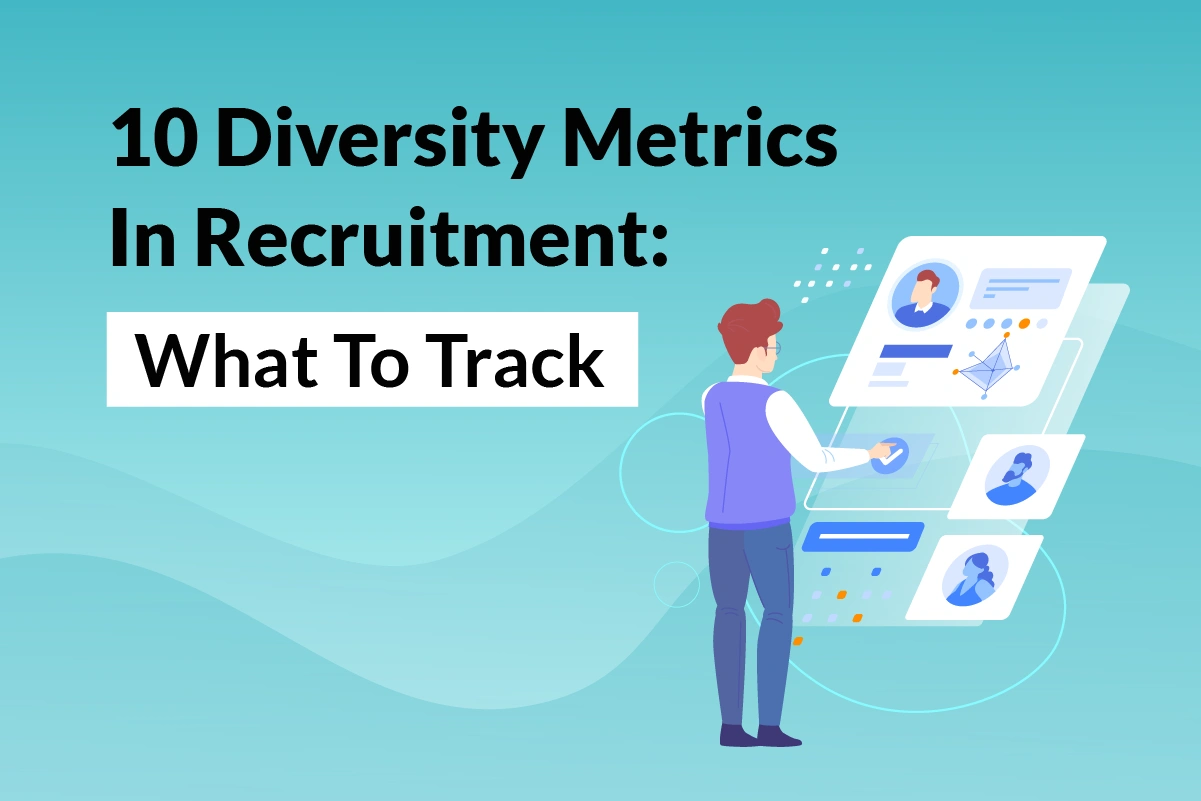Diversity metrics in recruitment have emerged as a cornerstone in the evolving recruitment landscape. Understanding which metrics to monitor is essential for organizations aiming to foster inclusivity. But with many options available, which are the diversity metrics to track? It’s time to shed light on the crucial diversity hiring metrics that can transform your recruitment strategy.
Demographic Representation
In the pursuit of a truly diverse workforce, understanding the diversity metrics to track is imperative since statistics show that diverse teams outperform their counterparts by nearly 35%. Especially in this era, where more people realize that their current culture is holding them back. Characteristics of those that feel marginalized are:
- Gender: Balanced gender—women and men equally representation enriches teams with diverse emotional intelligence.
- Ethnicity/Race: Diverse racial and ethnic teams prevent echo chambers, driving innovation through varied perspectives.
- Age: Life experience counts; there’s no way around it. Therefore, merging Baby Boomers’ wisdom with Millennials’ tech-savviness fosters groundbreaking strategies.
- Sexual Orientation: As we champion inclusive workspaces, it becomes essential to recognize and represent all sexual orientations. It’s about respecting varied life experiences and fostering an innovative, inclusive culture.
- Disability Status: Create spaces that accommodate seen and unseen disabilities. You’ll soon learn that you have people on your team who have felt excluded. But now they can bring their whole selves to their role.

Source of Hire
For HR professionals, diversity specialists, and forward-thinking leaders committed to constructing a diverse talent pool, it’s imperative to capture and run analytics on the source of the hire.
- Referrals: Your employees are bridges to diverse talent networks. Encourage them to recommend talents, but diversify if your team is currently homogeneous.
- Job Boards: Choose platforms that align with your organizational values and objectives. Selecting those that resonate with your company’s mission and vision is crucial.
- Social Media: Platforms like LinkedIn, Facebook, and even Twitter are rich talent pools. These platforms ensure you maximize your reach and engage with potential hires.
- Career Fairs: Engage directly with talents at fairs, especially those at diverse institutions or sponsored by inclusive groups, which display your organization’s dedication to inclusivity.
- Internal Promotions: Prioritize internal diversity. When promoting, consider if members might excel with more mentorship or experience.
Candidate Pipeline
The diverse candidate pipeline stays indispensable in a corporate landscape where diversity recruitment helps build up a business. Understanding the complication from the initial sourcing to interviewing and final hiring ensures that the diverse employees you are targeting can be translated to actual hires. By embedding inclusivity throughout the recruitment stages and job tiers, companies can combat unconscious intolerance, promote innovative thinking, and truly embrace a holistic and progressive work environment.

Interview and Selection
The interview and selection stages are remarkable touch points in the recruitment process since it is vital to look at who we’re interviewing and who’s making the choices. Diverse candidates show the organizations are on the right track. Also, having a diverse interview panel helps avoid biases. This way, everyone gets a fair chance and makes better hiring decisions.
Offer Acceptance Rates
The journey doesn’t end with the offer letter. The ultimate metric of success lies in its acceptance. Offer acceptance rates can be seen as an affirmation of an organization’s genuine diversity efforts. A consistent acceptance across different groups indicates success, while disparities point to areas for growth. Understanding why candidates decline offers, particularly from diverse groups, provides organizations with constructive feedback, setting the course for future strategy and improvement.
Time to Hire
This metric indicates how swiftly an organization recruits. Examining this KPI for diverse candidates to non-diverse ones reveals if certain groups face delays in the hiring process. Equalizing these timelines is essential to ensure fairness and show that all candidates receive consistent treatment regardless of their backgrounds.
Promotions and Advancements
Businesses can identify and rectify hidden preconceptions by closely examining which candidates are considered for promotions, ensuring every talented individual gets a fair path toward leadership. Moreover, tracking promotions by demographics is crucial; this ensures every team member has equitable growth opportunities regardless of their background. So, for businesses aiming for success, fostering a culture of fair advancement is non-negotiable.
Retention Rates
Once they’re in, do they stay? The true cost of losing diverse talent extends beyond financials—it’s a dent in the organization’s culture, morale, and innovative capabilities. If diverse employees leave sooner than others, it might signal deeper issues in workplace culture or promotion opportunities. Organizations can capture critical feedback by examining retention rates and reasons for departures across different groups. This insight is essential to fine-tune a truly inclusive environment where everyone feels valued and stays longer.

Pay Equity
Equal pay for equal work, the significance of pay equity in organizations cannot be understated. Organizations need to ensure that employees receive equal compensation for comparable roles regardless of their demographics. When two employees, no matter gender, ethnicity, or any other distinguishing factor, bring the same value to a role, their compensation should reflect parity. A commitment to equitable pay solidifies an organization’s reputation.
Employee Surveys
Sometimes, the most direct feedback is the best. Regularly surveying employees offers invaluable insights into the effectiveness of diversity recruitment. Assessing inclusion scores of how welcome and included your employees feel and also understanding how employees perceive diversity initiatives can shed light on areas of improvement or strategies that need better communication.
All in all, these diversity recruiting metrics offer a roadmap to successful recruitment. Harnessing these metrics ensures a workplace that is diverse, inclusive, and primed for thriving success.
Embracing the Future with Inclusive Talent Strategies
In the field of cutting-edge diversity metrics in recruitment, understanding diversity is beyond ticking boxes; it’s about forging an organizational identity that’s resilient, innovative, and harmonious. By meticulously adopting and analyzing the various diversity metrics, businesses can ensure that the workplaces are truly inclusive and resonate with the broader global community.
Boulo Solutions helps organizations not just hire but hire right. With a proven track record in promoting diversity, let us elevate your organization with unmatched, diverse talent and customized strategies. Post A Job with Boulo Solutions and redefine your recruitment strategy.

